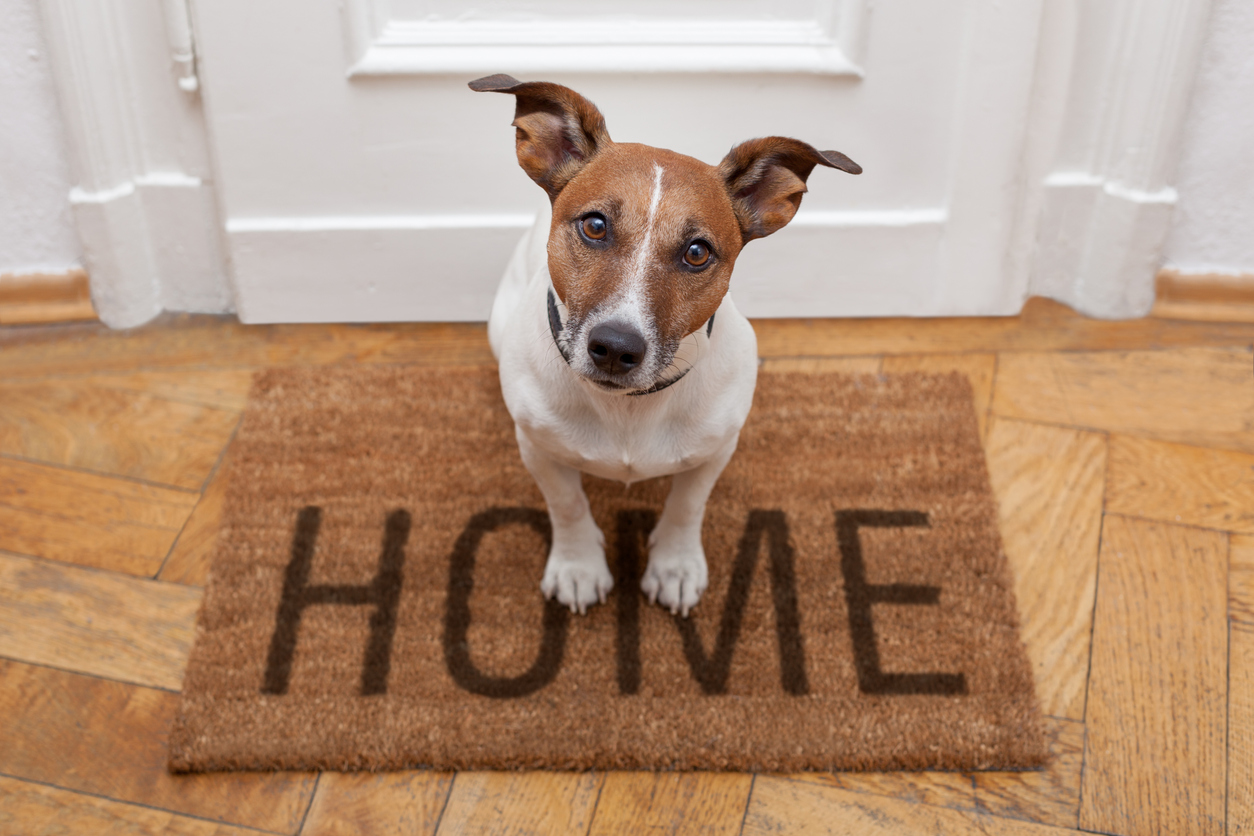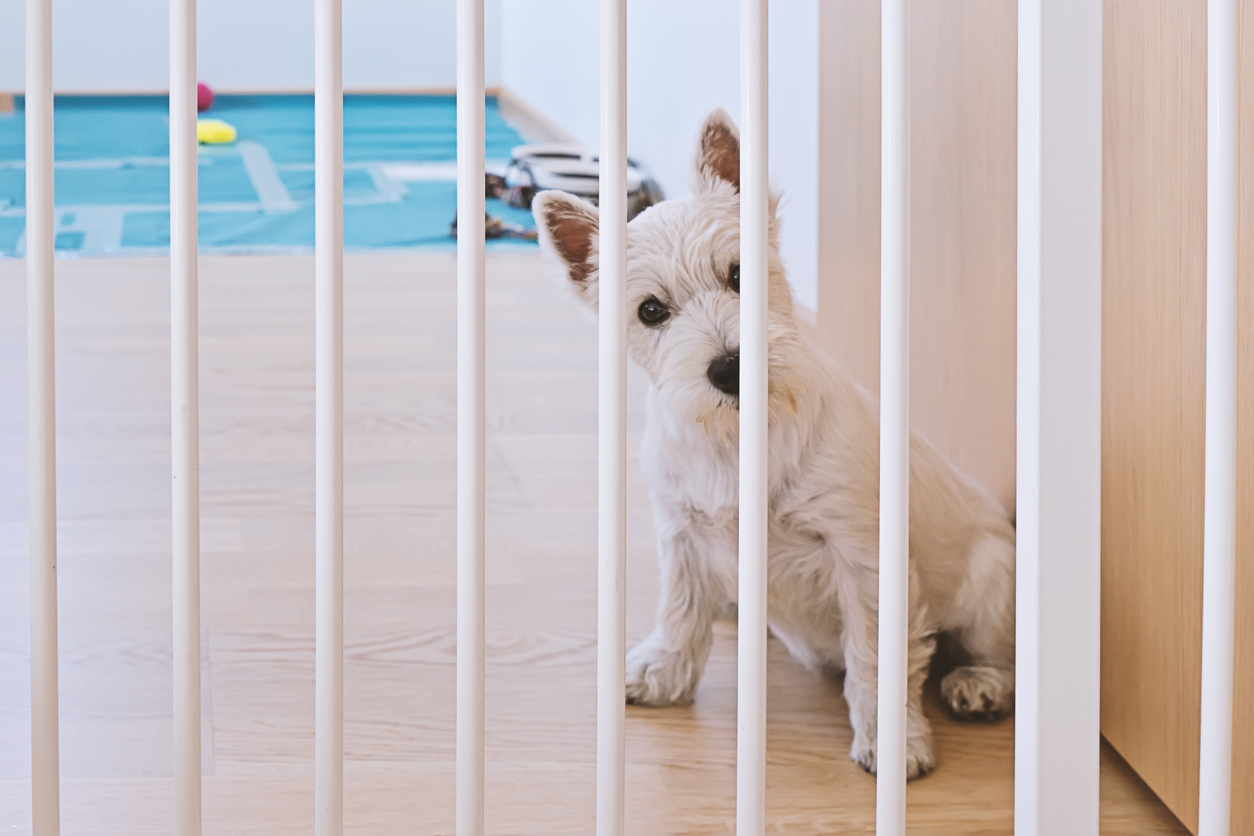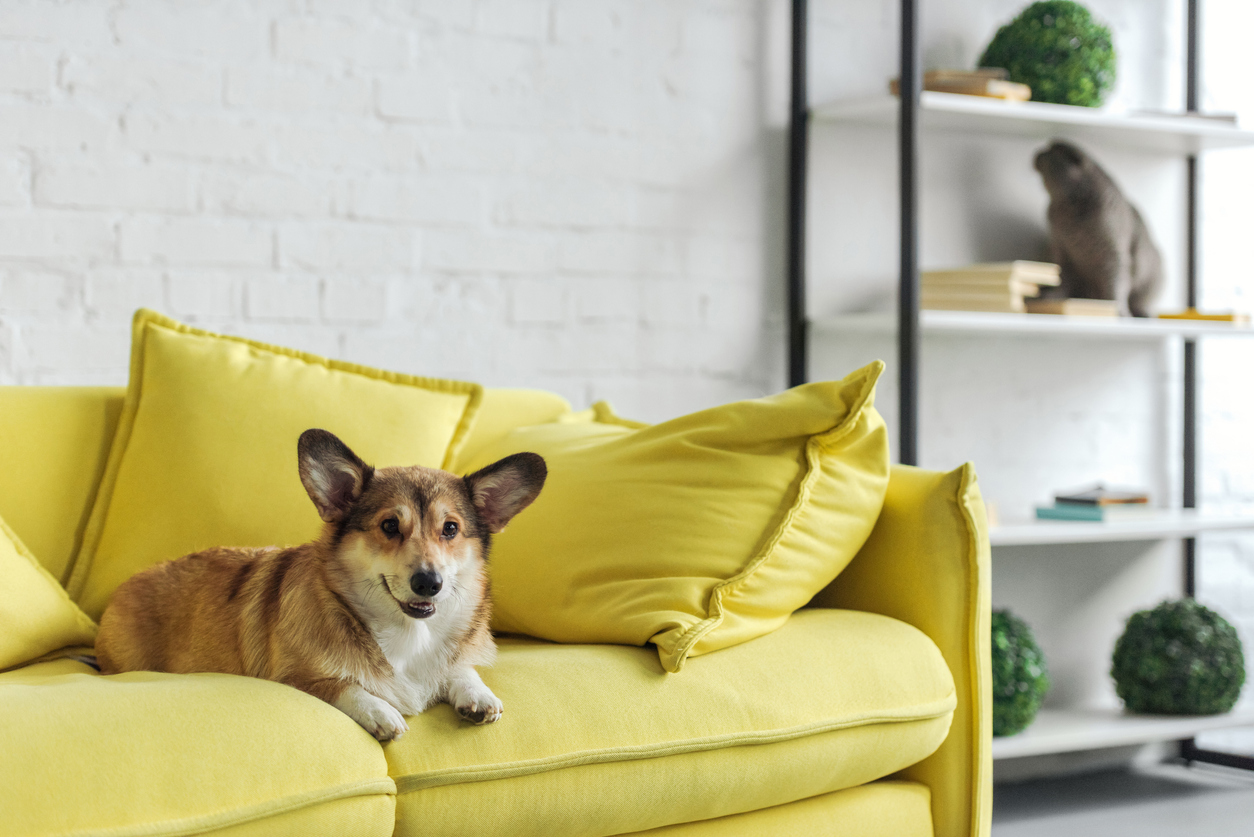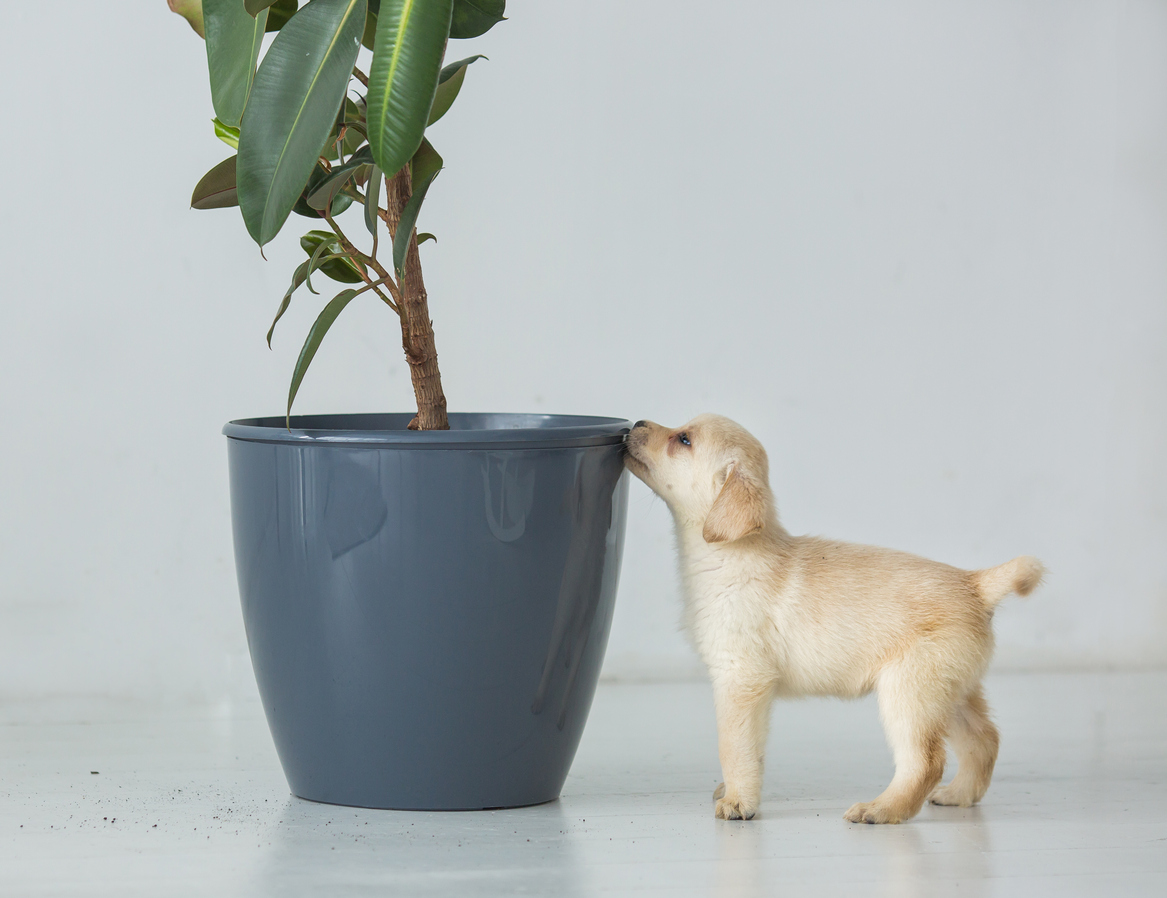Thanks to the HDB’s recent change in pet guidelines, larger dogs can now be re-homed to your flat. These updated regulations stem from Project Adore, a rehoming scheme for local mixed-breed dogs up for adoption. These dogs are no longer limited to a maximum weight, and can be up to 55 cm tall—a whole 5 cm larger than dogs purchased from a breeder.
Homeowners looking to adopt a furry friend should take note of more than the HDB guidelines, however. For a happy pet and a well-maintained home, it’s important to dog-proof your abode before diving into adoption. From hardy floors to secure cables, here are some things you might want to look into before getting a bigger dog.

- Flooring
The hands-down most ideal flooring option for dog owners is vinyl. It’s scratch and stain-proof, inexpensive and easy to install, and makes your pet’s life that much easier with its non-slip properties. Linoleum is a good alternative whose only downside is the price tag, but whose major plus is that it is significantly more eco-friendly than vinyl flooring. The suitability of other flooring types varies. Natural floors, such as hardwood, scratch and stain easily, while ceramics and laminates are slippery, which can injure larger and older dogs. Ultimately, vinyl and linoleum are the way to go. - Doors and gates
Notoriously anxious when separated from their owners, dogs often scratch doors and try to enter into off-limits areas of the home. To protect your doors, consider installing a protection screen that covers your dog’s standing height, especially if they’re on the taller side. While it won’t stop your dog from scratching, it will significantly minimise the damage to your door’s surface. A more thorough measure is to keep your dog out of certain parts of the home with pet gates, which can also protect your four-legged friend from tumbling down the stairs and getting caught in dangerous areas of the house. If you want to minimise scratching without limiting your dog’s movements, pet flaps can be installed through your doors. However, keep in mind that these could lower your HDB flat’s resale value further down the line, especially if they are made for larger dog breeds.
- Furniture
While not every dog chews furniture, you might want to invest in items with metal or concrete legs as a preventative measure. Fragile pieces, such as glass tables, should be avoided or at the very least secured with a steadfast base, as energetic and especially bigger dogs can easily topple them and injure themselves. For an extra safe and even baby-proof HDB flat, elevate low-height furniture with sharp edges, or remove it entirely. - Couches
Dogs don’t just love scratching doors and chewing furniture, they also like making a mess of the couch. While smaller dogs can often not reach the top by themselves, the new sizing guidelines mean that your pet might be able to jump up and down and scratch the couch’s surface. Ideally, opt for removable couch covers with intricate patterns, as any damage to the fabric will be less apparent and they can be cleaned and replaced efficiently. Expensive and chic leather couches will deteriorate quickly and are much more difficult to clean than soft furnishings, making them not worth the price tag with the shortened lifespan.
- Dangerous items
Small items can be tricky to secure, as there are often so many around the house that some will likely slip your mind. Important ones to remember are items on the dangerous side, such as sharp objects and loose cables. Kitchen drawers and cabinets containing knives and sharp metals should be secured with safety locks, as large dogs have enough strength to force them open when left unlocked. Around the TV and other electrical appliances, cables should be hidden away safely. This will not only protect your pets and electronics, but will keep the area looking neat and organised. - Plants
If your home is dotted with plant pots, especially on the ground, you might want to consider investing in vertical gardening instead. Your dog might interpret your plants as personal bathrooms, could end up eating plants that aren’t safe for dogs, and will likely topple the pots and scatter earth and water over your floors. Plants stored on tables are at risk of falling if your dog is tall enough to reach them or has enough strength to shake the table. A vertical garden will rid your home of these problems without compromising on that green touch.
More information about HDB pet guidelines can be found on the HDB website.



